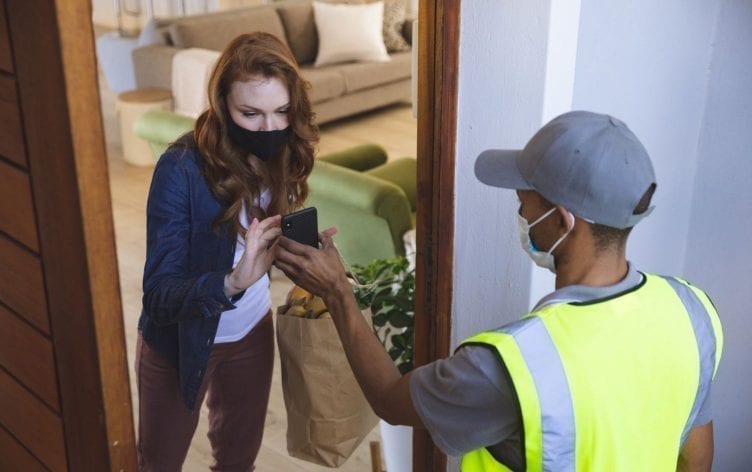
At the start of the pandemic, it was understandably hard to transition from an office space to working from home and figure out how to get in a good workout at home instead of at the gym. If you were tempted to binge “Tiger King,” snack more than usual and bake a ton of banana bread — you’re not alone.
“Somewhere around the summer, though, you probably started to get into more of a routine, finding ways to enjoy exercising at home, trying new recipes and getting more sleep,” says Shelby Burns, RD, a weight-loss specialist based in Boston. Those are all healthy habits that support weight loss and help you inch closer to your goals.
Now, it’s time to keep the momentum going. Here’s how to build on what you learned about yourself, your health habits and your goals during the pandemic:
1
ASSESS WHAT IS (AND ISN’T) WORKING
Create a list of all the habits you incorporated, suggests Burns. Maybe you replaced your normal driving commute with a walk every morning. Perhaps you get an extra 30 minutes of sleep or maybe you cook more at home. What did you enjoy, and what fit with your lifestyle and schedule the best?
Similarly, it’s helpful to look at what didn’t work, like working at the kitchen table within arm’s reach of all the snacks. This gives you greater clarity as to what habits to put your energy toward and what can still use some tweaking. For example, maybe you make it a weekend project to organize your kitchen to support weight loss, storing those kryptonite foods out of sight.
2
GET CREATIVE WITH EXERCISE
Regular movement is key to any weight-loss routine and for promoting overall health. To prevent your new at-home routines from getting boring, find ways to level up. Invest in home workout equipment, like free weights, a yoga mat or resistance bands. Try a different virtual workout class and “experiment with new outdoor activities to find one you really love and want to make into a hobby,” says Burns. Even if you live in a cold climate, there are tons of things to do, like cross-country or downhill skiing, walking and running, snowshoeing and hiking.
3
CONTINUE TO GROCERY SHOP ONLINE
Buying groceries online has its challenges (who said that a bag of jerky was a substitute for a case of sparkling water?), but there’s one major perk: Fewer impulse buys, says Burns. “We’re not going to the store and throwing everything into our cart or shopping hungry. Instead, we’re conscious about what we’re putting in our carts and aren’t tempted by the sight of certain foods,” she says. Another bonus: It saves money and time.
4
EXPERIMENT IN THE KITCHEN
“With the pandemic, we saw people starting to learn new recipes,” says Burns. Depending on the area you live in, restaurants may be operating in a limited capacity or not open for dine-in at all. And so, you were likely forced to cook at home more. Use this time to up your game and ‘travel’ to new places by experimenting with new recipes and cuisines, suggests Burns. If you do want to order in, that can be done in a healthful way, too. The trick is to do some menu sleuthing to find healthier options, that go easy on added sauces or creams, are baked rather than fried and contain a protein, she says.
5
SIT DOWN AND ENJOY MEALS
With more time at home, “people took the time to step away from their work environment and sit down and eat, rather than eating meals at their desk, in a meeting, or on-the-go,” says Burns. Even if you eventually return to an office (or occasionally go in), reserve the time to sit down and eat without distraction, as being mindful can help prevent overeating.
6
PRIORITIZE SLEEP
Lack of sleep skews the hormones that influence hunger and satiety, and you may find yourself snacking more or reaching for less nutritious food when tired. “For many people, the pandemic provided an opportunity to sleep in and perhaps log more hours of shut-eye,” says Burns. Now is a good time to assess what else you can do to improve your sleep. For instance, put away your phone an hour before bed, so the blue light won’t interfere with your sleep (or keep you up late responding to emails). Scheduling time to unwind and cementing a sleep hygiene routine can similarly improve your waistline.
Make progress every day while you work on mini fitness and nutrition goals, like walking more steps or learning to track macros. Go to “Plans” in the MyFitnessPal app for daily coaching and easy-to-follow tasks to keep you motivated.



